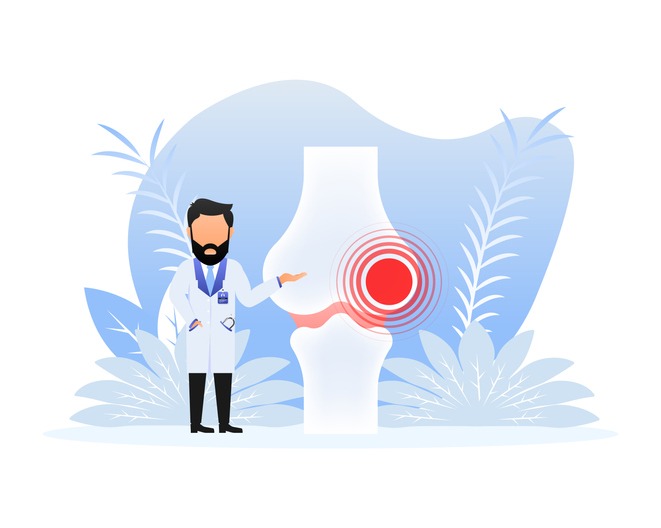
Osteoarthritis is the most common joint disease worldwide, affecting an estimated 10% of men and 18% of women aged over 60 years, and is a common presentation in general practice – here’s an overview of the risk factors, diagnosis and more
CREDIT: This is an edited version of an article that originally appeared on Medscape.
In October 2022, NICE published NICE Guideline 226 (NG226), Osteoarthritis in over 16s: Diagnosis and Management, which updates and replaces its previous guideline on the topic.
In NG226, NICE suggests that clinicians should be conservative with medication and use it as a second-line treatment, with first-line management consisting of exercise, physical therapy and, if the patient is overweight, weight reduction. The guideline also covers the consideration of referral for joint replacement surgery.
There is insufficient evidence that medical treatments can halt or significantly change the progression of osteoarthritis, although certain treatments—including physical therapies, anti-inflammatories, and joint injections—can ameliorate symptoms, and surgical joint replacements, generally considered a last resort, can be seen as a cure.
In light of this, clinicians should recognise that NICE guidance is primarily evidence based but, when evidence is scarce or absent, NICE can sometimes give guidance that may be described as ‘eminence based’, meaning that it was developed through the consensus of experts.
Risk factors
The cause of osteoarthritis is unclear, but there is evidence—from a study of monozygotic twins in particular, but also from other research—that genetics play a role in its aetiology. Other risk factors that appear to play a role in the pathogenesis of osteoarthritis include:
- Increasing age
- Female sex
- Obesity, which increases risk in weight-bearing joints in particular
- High and low bone density
- Joint injury, damage, malalignment, or abnormality
- Joint laxity or reduced muscle strength
- Exercises or occupational stresses, such as those involving joint load, repetitive movements, or prolonged lifting and standing
- Damage from other joint diseases, such as gout.
Diagnosis
NICE recommends diagnosing osteoarthritis clinically (without imaging) in people who:
- Are older than 45 years
- Have activity-related joint pain
- Have either no joint-related stiffness in the morning, or joint-related stiffness that lasts no longer than 30 minutes.
NG226 advises clinicians not to order imaging of a joint for diagnostic purposes unless there are atypical features or suspicion of an alternative diagnosis.
Management
Osteoarthritis management is generally based on symptoms and physical function; the main aspects are the provision of information and support, the promotion of tailored exercise and weight management, and the treatment of symptoms.
Importantly, NICE recommends that clinicians should practise shared decision making when supporting patients with the condition and should consider how management may differ for patients with multimorbidity.
Information and support
NG226 emphasises the importance of providing information about osteoarthritis not only to the patient, but also to their family and carers, as this helps them to better understand the condition and take an active part in its management.
Discussions between a clinician and a patient should cover:
- Diagnosis, and why it can usually be done clinically without the need for imaging
- How management works, and why it is guided by symptoms and physical function
- The main ways in which osteoarthritis is treated, namely therapeutic exercise and weight management.
Nonpharmacological management
The nonpharmacological management of osteoarthritis generally consists of a combination of therapeutic exercise, weight management, manual therapy, and the use of mobility aids.
Tailored therapeutic exercise
Tailored therapeutic exercise, with consideration of supervised sessions to increase adherence and foster regular exercise habits, is the primary method recommended by NICE for managing osteoarthritis.
Weight reduction (if overweight)
Although the available evidence is limited, NICE acknowledges that weight loss is generally associated with improved symptoms and quality of life for people with osteoarthritis, particularly those with knee osteoarthritis.
Therefore, NG226 recommends advising patients who are overweight or obese to lose weight and supporting them to choose a weight-loss goal.
Manual therapy
In its evidence review, NG226’s Guideline Development Group acknowledged that there is insufficient evidence to recommend the use of manual therapy alone.
However, the committee decided that there was enough evidence of its benefits when combined with therapeutic exercise to recommend considering its use alongside exercise specifically in people with hip and knee osteoarthritis.
Manual therapy can include manipulation, mobilisation, or soft-tissue techniques.
Mobility aids
Walking aids include walking sticks, crutches, walking frames, and rollators—use of these aids can be considered for patients with lower-limb osteoarthritis. Insoles, braces, tape, splints, and supports can also be helpful for joint stability, but are recommended only if the following are all true:
- The patient has joint instability or abnormal biomechanical loading
- Therapeutic exercise would be ineffective or impossible without this kind of aid
- The aid would likely improve the patient’s movement and function.
Acupuncture and electrotherapy
NICE stresses that clinicians should not recommend acupuncture, dry needling, or electrotherapy treatments for the management of osteoarthritis.
Referral
Hip, knee, and shoulder replacements are indicated if nonsurgical management is ineffective or unsuitable and—crucially—the person’s joint symptoms are substantially affecting their quality of life.
Clinicians should make referral decisions based on clinical assessment, rather than numerical scoring systems.
Inadvisable actions
NG226 lists some inadvisable actions that clinicians managing patients with osteoarthritis should take care to avoid. Acupuncture or dry needling should not be offered to patients to manage osteoarthritis.
Similarly, the following electrotherapy treatments should not be used in people with osteoarthritis because there is insufficient evidence of benefit:
- Transcutaneous electrical nerve stimulation
- Ultrasound therapy
- Interferential therapy
- Laser therapy
- Pulsed short-wave therapy
- Neuromuscular electrical stimulation.
Research priorities
The four key research priorities identified in NG226 are:
Exercise
‘What is the clinical and cost effectiveness of supervised group and individual exercise compared with unsupervised exercise for people with osteoarthritis?’
Devices
‘What is the clinical and cost effectiveness of devices compared with usual care for the management of painful foot and/or ankle osteoarthritis?’
Topical medicines
‘What is the clinical and cost effectiveness of topical [NSAIDs] and topical capsaicin for osteoarthritis-affected joints other than the knee?’
Follow-up strategies
‘What is the clinical and cost effectiveness of patient-initiated follow up compared with routine follow up for people with osteoarthritis?’
Conclusion
Although osteoarthritis is a common condition, there is still a lack of strong evidence to support most management techniques, and no evidence of treatments that change the progress of the disease apart from joint replacement.
NICE’s new guidance prioritises information sharing and nonpharmacological treatments, particularly therapeutic exercise, to improve patients’ lives, and emphasises the limits of pharmacological treatment. Hopefully, research in the areas identified by NICE will help to guide the future management of this disease.


Be the first to comment